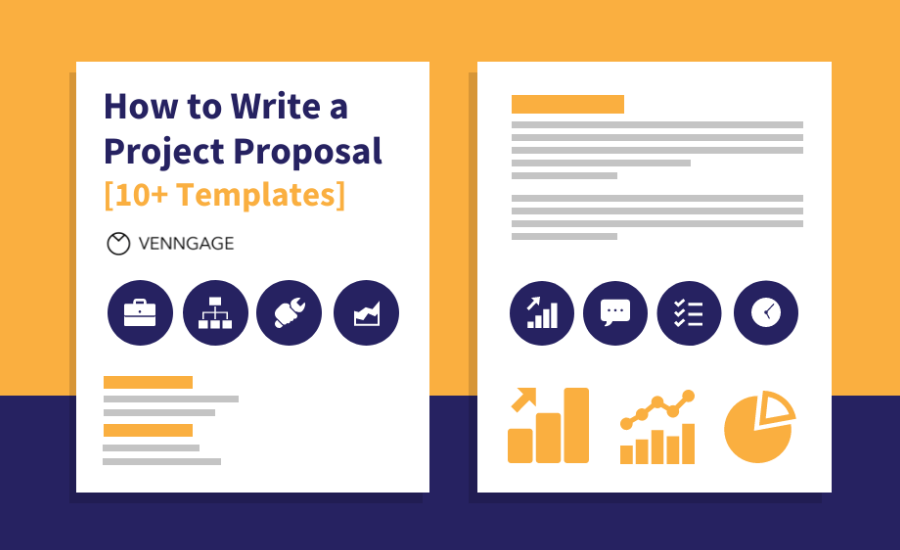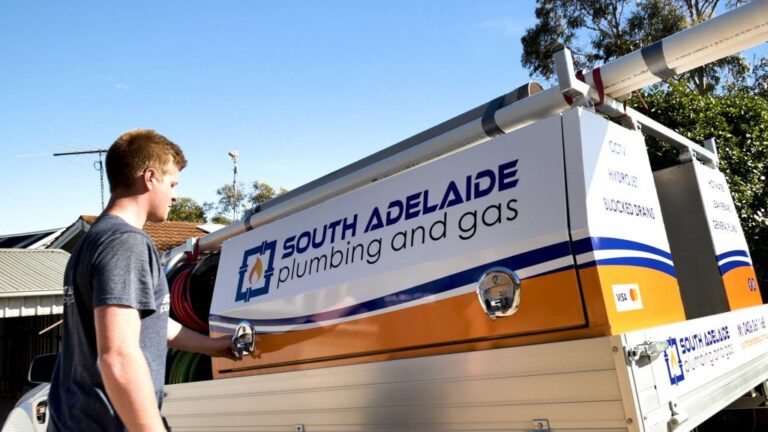
Templates for project proposal are pre-designed documents that provide a structure and outline for creating a project proposal. These templates are useful for saving time and ensuring that all necessary information is included in the proposal. They can be customized to suit specific project needs and may include sections for project overview, objectives, methodology, timeline, budget, team members, and other relevant information. Using a project proposal template can help to streamline the proposal writing process and increase the chances of success in securing project funding or approval
How do you lay out a project proposal?
The layout of a project proposal typically includes the following sections:
Cover Page:
- This should include the project title, organization name, date, and other relevant information such as the names of the project team members or project sponsor.
Executive Summary:
- This section should provide a brief overview of the project, including the purpose, objectives, and key deliverables.
Background and Problem Statement:
- This section should describe the background and context of the project, including any relevant research or analysis that has been conducted. It should also outline the problem or issue that the project aims to address.
Goals and Objectives:
- This section should clearly state the project’s goals and objectives, outlining what the project hopes to achieve.
Methodology:
- This section should describe the approach that will be used to achieve the project’s goals and objectives. This may include a description of the project’s scope, methodology, and any tools or techniques that will be used.
Timeline:
- This section should outline the project timeline, including key milestones and deadlines.
Budget:
- This section should provide a detailed budget for the project, including costs for materials, labour, and other expenses.
Evaluation and Measurement:
- This section should describe how the project will be evaluated and measured to determine its success.
Conclusion:
- This section should summarise the proposal and reiterate the importance of the project.
Appendices:
- This section should include any additional information or supporting documentation that is relevant to the proposal.
When laying out a project proposal, it is important to ensure that the information is presented in a clear and concise manner. The proposal should be easy to read and understand, with headings and subheadings used to organize the information. Additionally, graphics and visual aids may be used to help illustrate key points or data.
Simple project proposal example
Here is an example of a simple project proposal:
Project Title: Community Garden Project
Executive Summary:
The Community Garden Project aims to establish a community garden in the local area, with the goal of providing access to fresh produce and promoting community engagement. The project will involve the installation of raised garden beds, irrigation systems, and the planting of vegetables and herbs.
Background and Problem Statement:
There is a lack of access to fresh produce in the local area, which can have negative impacts on health and well-being. Additionally, the community lacks a central space for social interaction and engagement.
Goals and Objectives:
The goal of the project is to establish a community garden that provides access to fresh produce and promotes community engagement. The objectives of the project include:
- Installing raised garden beds and irrigation systems
- Planting a variety of vegetables and herbs
- Engaging community members in the planning and maintenance of the garden
- Hosting community events and workshops in the garden space
Methodology:
The project will be implemented in several stages, including:
- Research and planning: Identify suitable garden locations, obtain necessary permissions, and develop a garden design.
- Installation: Build raised garden beds, install irrigation systems, and prepare the garden beds for planting.
- Planting and maintenance: Plant a variety of vegetables and herbs, engage community members in garden maintenance, and monitor plant growth.
- Community events: Host community events and workshops in the garden space, including cooking demonstrations and gardening workshops.
Timeline:
The project will be implemented over a period of six months, with the following timeline:
- Research and planning: 2 months
- Installation: 1 month
- Planting and maintenance: 2 months
- Community events: 1 month
Budget:
The project budget is estimated at $10,000 and will cover the following expenses:
- Garden bed materials: $3,000
- Irrigation system: $2,000
- Soil and compost: $1,000
- Plants and seeds: $2,000
- Tools and equipment: $1,000
- Community event expenses: $1,000
Evaluation and Measurement:
The success of the project will be measured through community participation and engagement, the growth and yield of the garden, and the number of community events and workshops hosted.
What are the 6 parts of a project proposal?
A project proposal typically includes the following six parts:
- Introduction: This section provides a brief overview of the project and its goals, and may include background information and context for the proposal.
- Problem Statement: This section describes the problem or issue that the project aims to address, including any relevant data or statistics to support the need for the project.
- Objectives: This section outlines the specific goals and objectives of the project, including what the project aims to achieve and how it will benefit the target audience or community.
- Methodology: This section describes the approach and methods that will be used to implement the project, including any necessary resources, tools, or equipment.
- Evaluation and Measurement: This section outlines how the success of the project will be evaluated and measured, including any relevant metrics, data collection methods, or monitoring and evaluation plans.
- Budget: This section provides a detailed breakdown of the project budget, including estimated costs for all necessary resources, materials, and labour, as well as any other relevant expenses. It may also include information on funding sources and sustainability plans beyond the initial project implementation period.
It is important to note that the specific content and structure of a project proposal may vary depending on the specific project and its requirements, as well as the preferences and guidelines of the organisation or institution requesting the proposal.
What is the standard format for a project proposal?
There is no strict standard format for a project proposal, as the specific requirements and guidelines may vary depending on the organisation or institution requesting the proposal. However, most project proposals include certain key sections, such as:
- Cover page: This includes the title of the project, the name of the organisation or institution submitting the proposal, the name of the person or team responsible for the project, and the date of submission.
- Executive summary: This provides a brief overview of the project, its goals, and its expected outcomes, and is often the first section that the proposal reviewer will read.
- Introduction: This section provides a more detailed background and context for the project, including any relevant statistics, data, or research that supports the need for the project.
- Problem statement: This section describes the specific problem or issue that the project aims to address, including its scope, impact, and significance.
- Objectives: This section outlines the specific goals and objectives of the project, including what the project aims to achieve and how it will benefit the target audience or community.
- Methodology: This section describes the approach and methods that will be used to implement the project, including any necessary resources, tools, or equipment.
- Evaluation and measurement: This section outlines how the success of the project will be evaluated and measured, including any relevant metrics, data collection methods, or monitoring and evaluation plans.
- Budget: This section provides a detailed breakdown of the project budget, including estimated costs for all necessary resources, materials, and labour, as well as any other relevant expenses.
- Conclusion: This section summarises the key points of the proposal and reiterates its importance and potential impact.
Again, it is important to note that the specific content and structure of a project proposal may vary depending on the specific project and its requirements, as well as the preferences and guidelines of the organisation or institution requesting the proposal.
Free proposal template word
There are many free proposal templates available for Microsoft Word that you can use as a starting point for creating your own project proposal. Here are some tips on how to find and use free proposal templates in Word:
- Open Microsoft Word and click on “File” > “New” to open the New Document screen.
- In the search bar, type “Proposal” and press Enter. This will bring up a selection of proposal templates to choose from.
- Browse through the templates to find one that fits your needs and click on it to open a preview.
- Review the template and decide if it meets your needs. If it does, click on “Create” to open a new document based on the template.
- Edit the document to reflect the specifics of your project proposal. Be sure to fill in all relevant information, such as the project title, introduction, objectives, methodology, evaluation, and budget.
- Customise the template to match your branding and style. Add your logo, adjust the font, and use your company colors to make the proposal your own.
- Review the proposal carefully to ensure that it is accurate, complete, and meets all requirements.
- Save the proposal and share it with the relevant stakeholders, such as the client or project team.
By using a free proposal template in Word, you can save time and effort while creating a professional-looking project proposal. Just be sure to review the template carefully and customise it to fit your specific needs and requirements.
Faqs
Q: Are free project proposal templates reliable?
A: Yes, many free project proposal templates are reliable and can be used as a starting point for creating your own proposal. However, it is important to review the template carefully and customise it to fit your specific needs and requirements.
Q: Can I use a template for any type of project proposal?
A: It depends on the template. Some templates are more general and can be used for a variety of project proposals, while others are more specific and may be better suited for certain types of proposals, such as marketing proposals or construction proposals.
Q: Can I edit a proposal template in Microsoft Word?
A: Yes, most proposal templates are designed to be edited in Microsoft Word, so you can customise the template to fit your specific needs and requirements.
Q: Do I need to credit the author of the proposal template?
A: It depends on the specific template and the terms of use. Some templates may require you to credit the author, while others may not. Be sure to review the terms of use before using a template.
Q: Are there any legal issues with using a free project proposal template?
A: As long as you use the template in accordance with the terms of use, there should not be any legal issues. However, it is always a good idea to review the terms of use and consult with legal counsel if you have any concerns.
Conclusion
In conclusion, templates for project proposals are a useful tool for creating effective project proposals. They provide a clear structure and format for organising information and presenting it in a professional manner. While there are many free templates available online, it is important to carefully review them and customise them to fit your specific needs and requirements. With a well-crafted project proposal, you can increase the chances of securing funding, support, and resources for your project.



